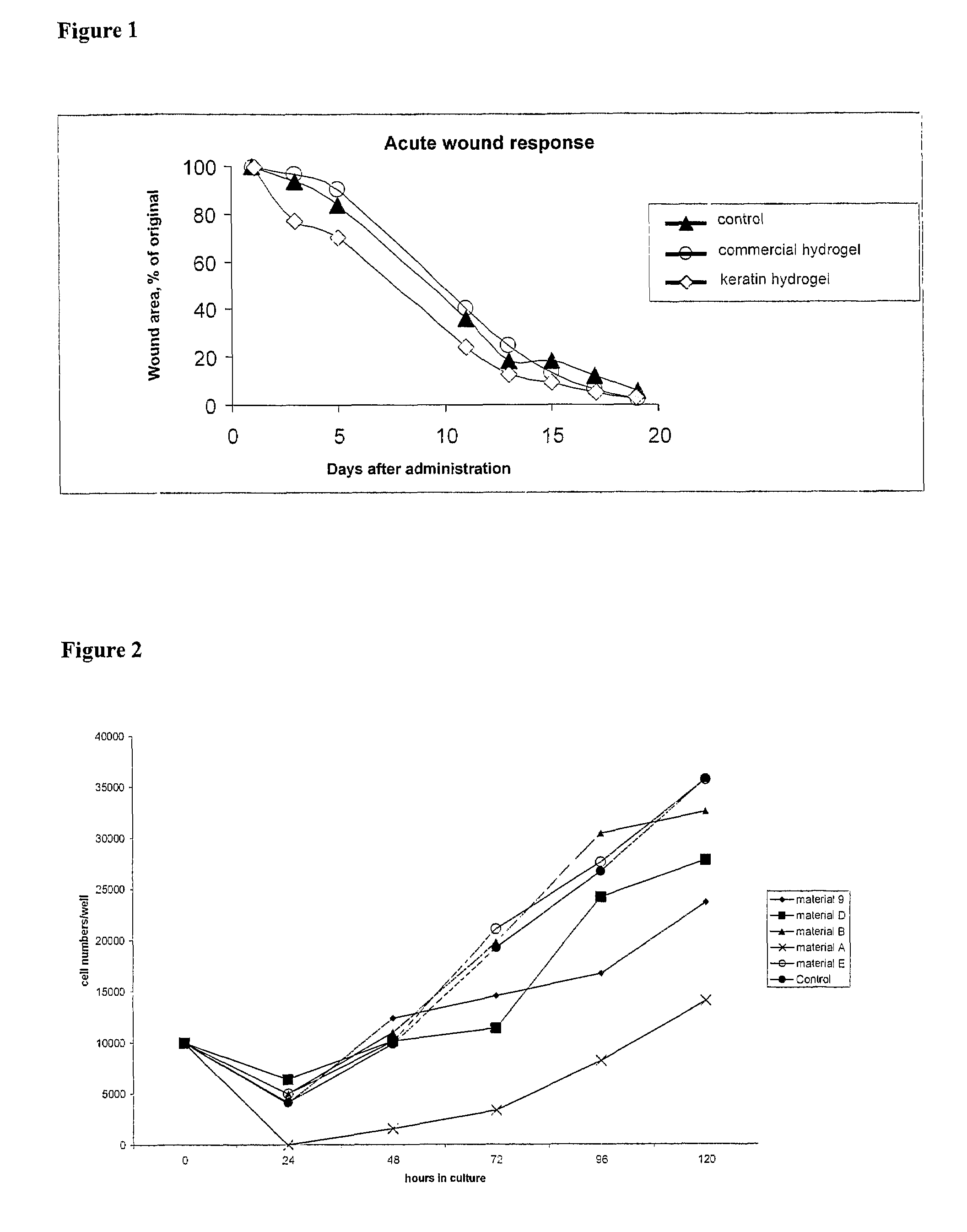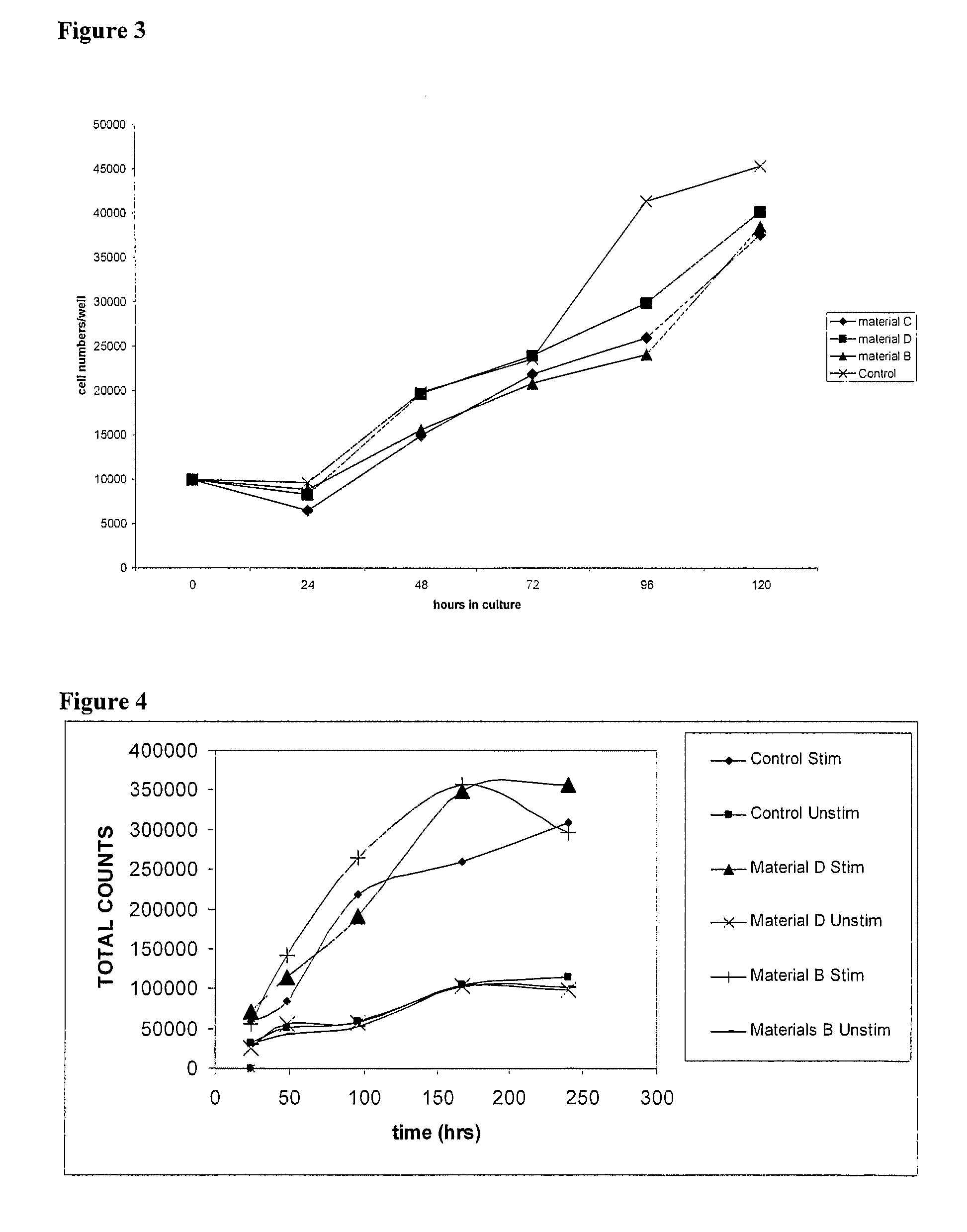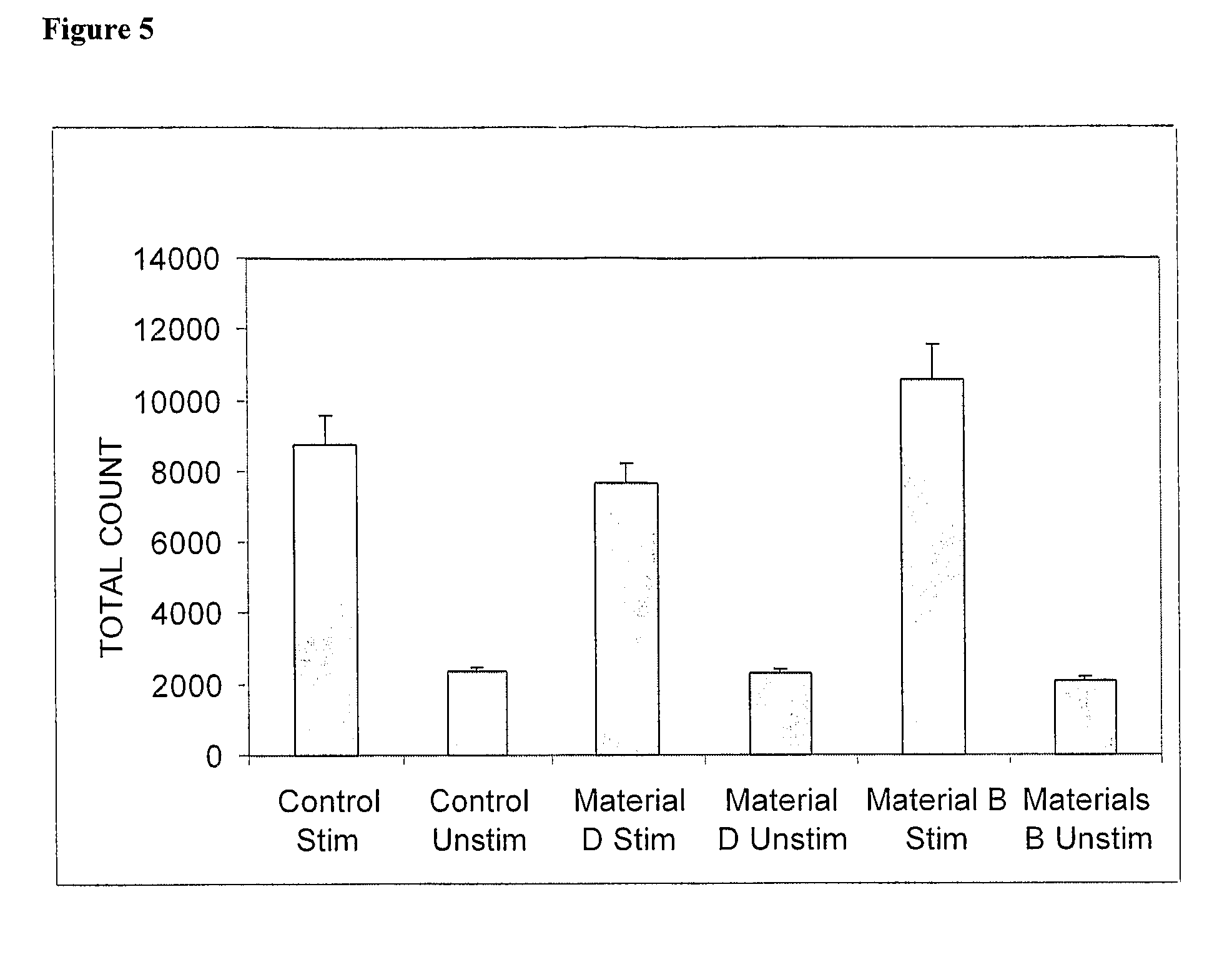Wound care products containing keratin
a technology of keratin and wound care products, which is applied in the direction of peptides, drug compositions, peptides, etc., can solve the problems of ulcers and septicemia, conventional cascade of biochemical processes which occur in wound healing, and disrupt the formation of granulation tissue and reepithelization and remodeling, etc., to improve the wet strength properties of wound care products.
- Summary
- Abstract
- Description
- Claims
- Application Information
AI Technical Summary
Benefits of technology
Problems solved by technology
Method used
Image
Examples
example 1
Production of Keratin Membranes for Use in a Wound Care Product
[0093]A 10% S-sulfonated keratin intermediate filament protein (SIFP) solution was prepared using of S-sulfonated keratin intermediate filament protein powder dissolved in distilled water with gradual addition of 1M NaOH over 2 hours under mechanical stirring. The pH was maintained in the range 8.0-9.5, and finally adjusted to 8.5. The keratin protein solution was centrifuged at 27000 g for 10 mins in order to remove any air bubbles and undissolved material. The resulting keratin protein solution was cast into a petri dish and the solvents evaporated wider ambient conditions to leave a keratin membrane. The solvent can also include some percentage of organic based aqueous miscible solvent, such as an alcohol.
example 2
Production of a Keratin Hydrogel for Use in Wound Care Products
[0094]A 10% S-sulfonated keratin intermediate filament protein (SIFP) solution was prepared as describe in Example 1. The solution was then intimately mixed with water soluble polymers such as polyvinyl alcohol (PVA) comprising 20% solid content and polyvinyl pyrrolidone (PVP) comprising 10% solid content to a achieve a optimum rheology and optimal composition i.e., SIFP:PVA:PVP=100:60:40 (w / w, %) for creating hydrogel. The combined solution was then cast, and hardened through a freezing-thawing cycle to produce a keratin based hydrogel. This involved freezing the material at −80° C. for 1 hr and thawing at 23° C. for 1 hour. This freeze-thaw cycle was repeated up to 7 times to obtain a hydrogel. The resulting hydrogel was washed with distilled water multiple times to remove any unreacted keratin and polymers.
example 3
Production of Cross-Linked Keratin Membranes for Use in a Wound Care Product
[0095]In order to improve the physical strength and also mechanical properties of materials produced as described in Example 1 membranes were treated with reductants to induce chemical cross-linking. Immersion of the membranes in a solution of 0.25M ammonium thioglycollate adjusted to pH 7.0 for 60 minutes was used to remove the sulfonate group from the S-sulfonated keratin protein (SIFP), and allow the formation of disulfide bonds (—S—S—). The resulting membranes were washed multiple times with distilled water to remove any residual reagents.
PUM
| Property | Measurement | Unit |
|---|---|---|
| lag time | aaaaa | aaaaa |
| time | aaaaa | aaaaa |
| time | aaaaa | aaaaa |
Abstract
Description
Claims
Application Information
 Login to View More
Login to View More - R&D
- Intellectual Property
- Life Sciences
- Materials
- Tech Scout
- Unparalleled Data Quality
- Higher Quality Content
- 60% Fewer Hallucinations
Browse by: Latest US Patents, China's latest patents, Technical Efficacy Thesaurus, Application Domain, Technology Topic, Popular Technical Reports.
© 2025 PatSnap. All rights reserved.Legal|Privacy policy|Modern Slavery Act Transparency Statement|Sitemap|About US| Contact US: help@patsnap.com



